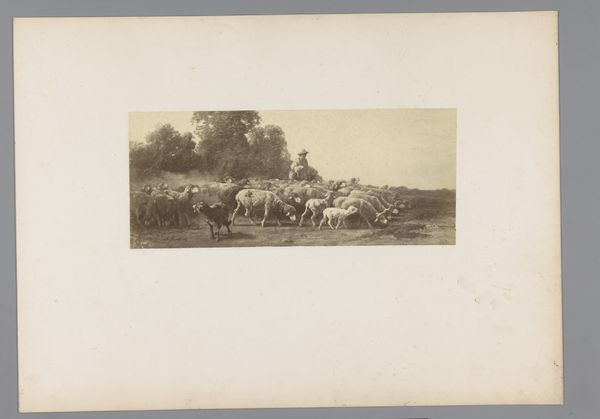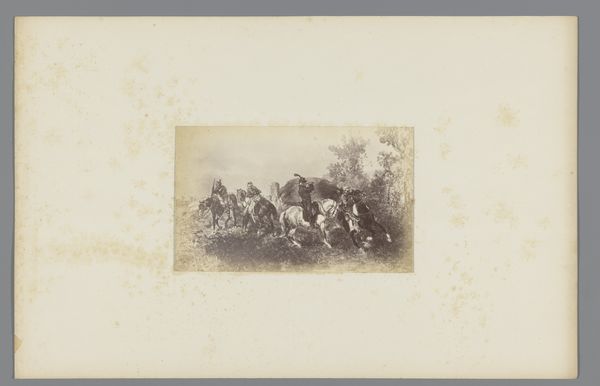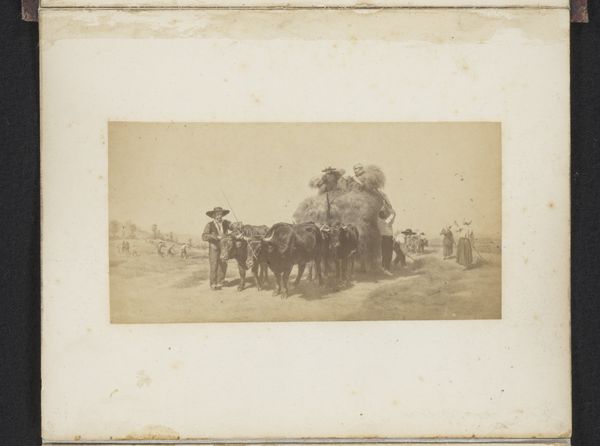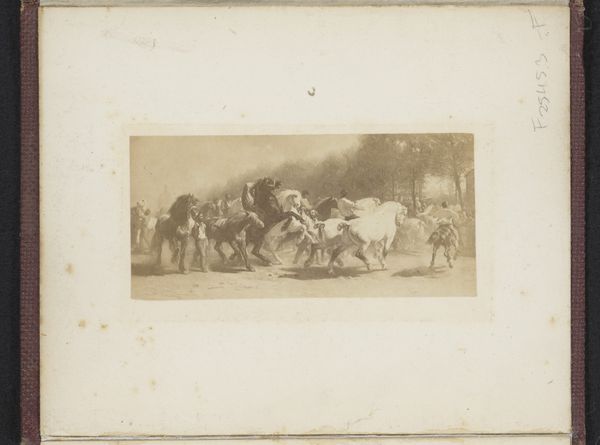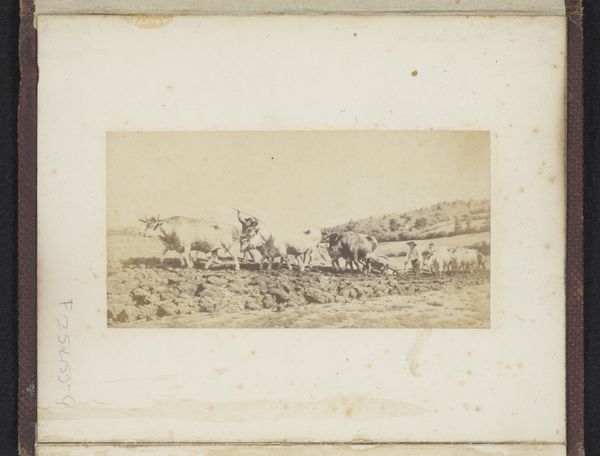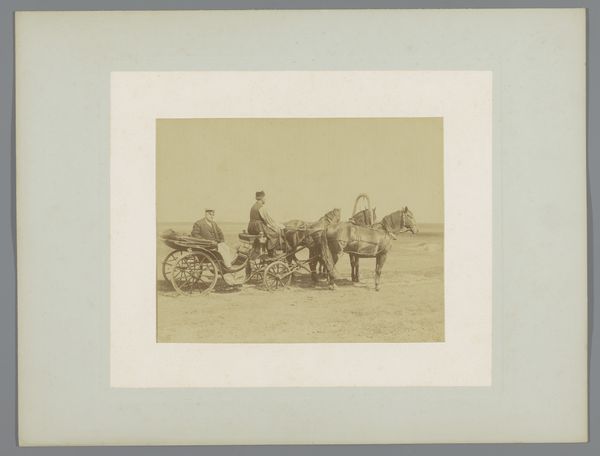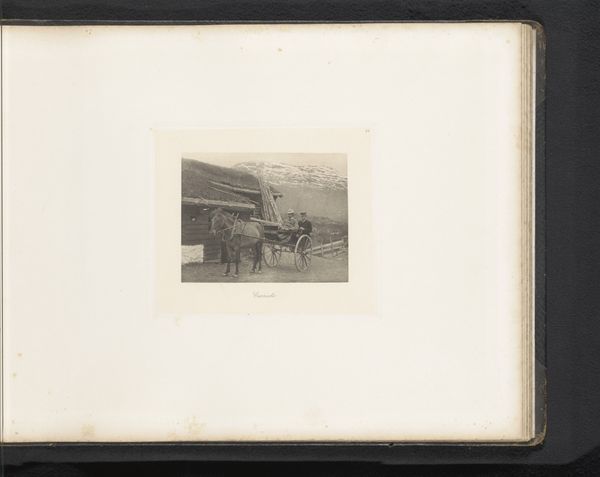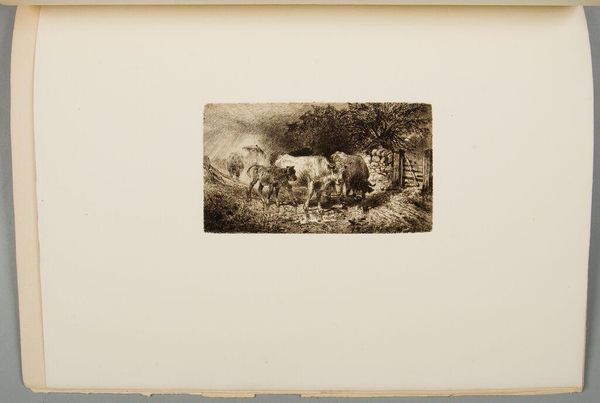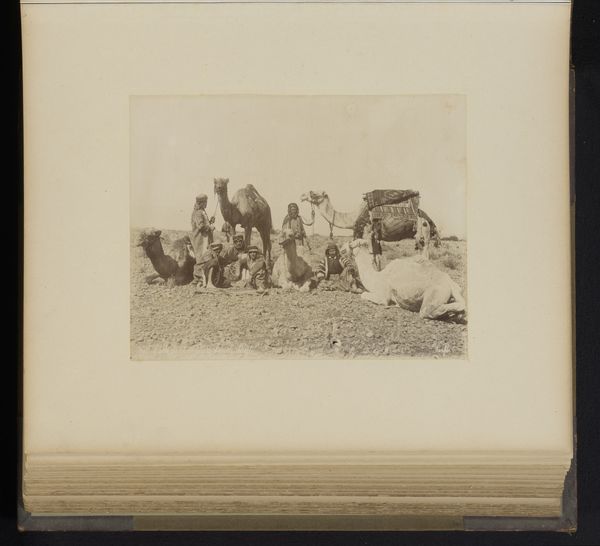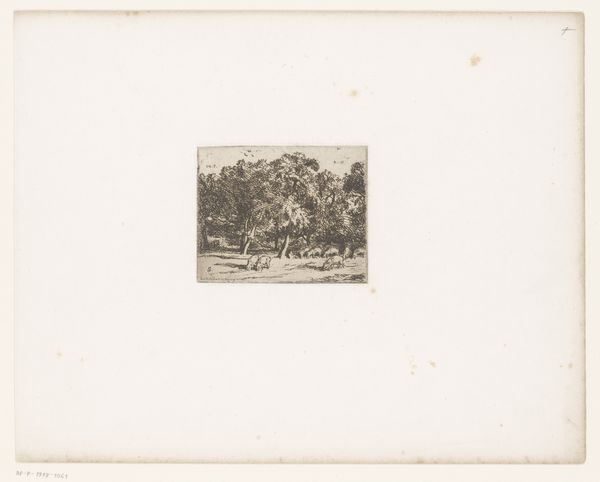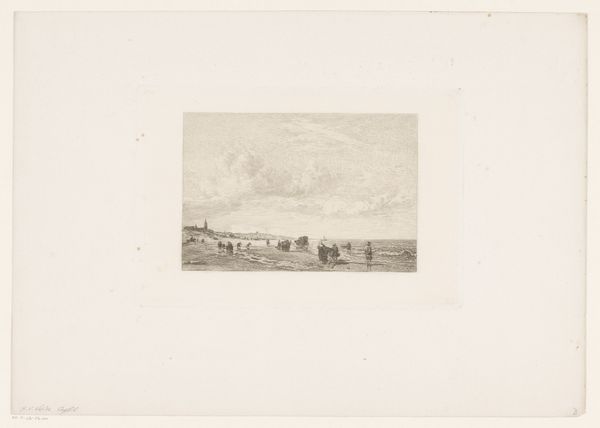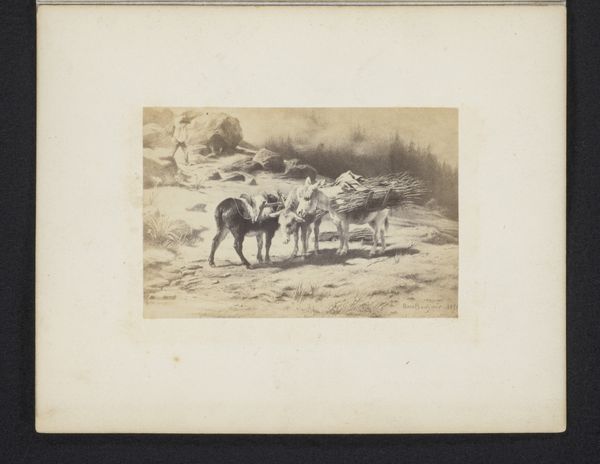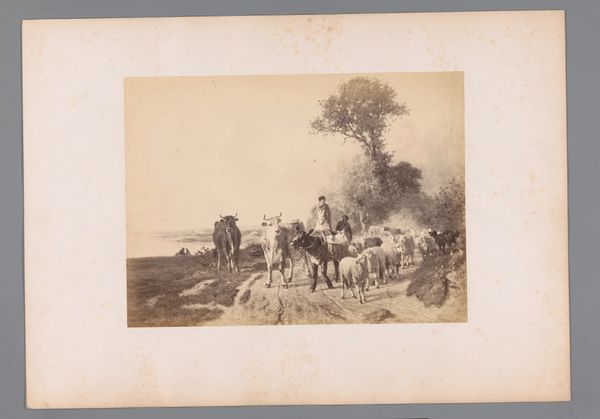
photography, gelatin-silver-print
#
landscape
#
photography
#
horse
#
gelatin-silver-print
#
genre-painting
#
realism
Dimensions: height 108 mm, width 159 mm
Copyright: Rijks Museum: Open Domain
Editor: So this gelatin-silver print, “Fotoreproductie van L'Attelage van Edmond Tschaggeny," from before 1863, depicts a horse-drawn carriage in a landscape. There’s something very staged and deliberate about it. What do you make of the cultural significance of reproducing paintings through photography at this time? Curator: That’s a fantastic observation. Photography in the mid-19th century was rapidly changing access to art. This image isn't just a landscape; it's a *reproduction* of a painting. Consider who had access to the original painting by Tschaggeny. Probably a very limited, elite audience. The photograph democratizes that, putting a version of that artwork into potentially many more hands. It is important to remember that the public role of art was becoming important at this time, and institutions were just learning how photography could transform access. Does knowing this is a reproduction shift your understanding of the artwork’s intent? Editor: It definitely does. I was initially focusing on the landscape elements and the realism of the horses, but the reproduction aspect makes me think more about its distribution. Were these kinds of photographs commonly sold? Curator: Yes, absolutely. Think of them as the postcards of their time, souvenirs, or even tools for art students to study works they couldn't otherwise access. They fueled a growing art market and helped shape public taste, reflecting a growing middle class and changing social values surrounding art consumption and education. What political or social role could reproductions like this have? Editor: It's almost a form of cultural leveling. The upper class loses exclusive access to certain works, which probably shifted art appreciation’s perception as being exclusively aristocratic. Curator: Exactly! The photograph's democratic appeal is undeniable. We can see that even early photography influenced how society engaged with art, creating a broader audience. It definitely changed how the elite interacted with art, but it also opened doors for the rising classes. I learned a new appreciation for the radical potential this “simple” photograph really holds.
Comments
No comments
Be the first to comment and join the conversation on the ultimate creative platform.
